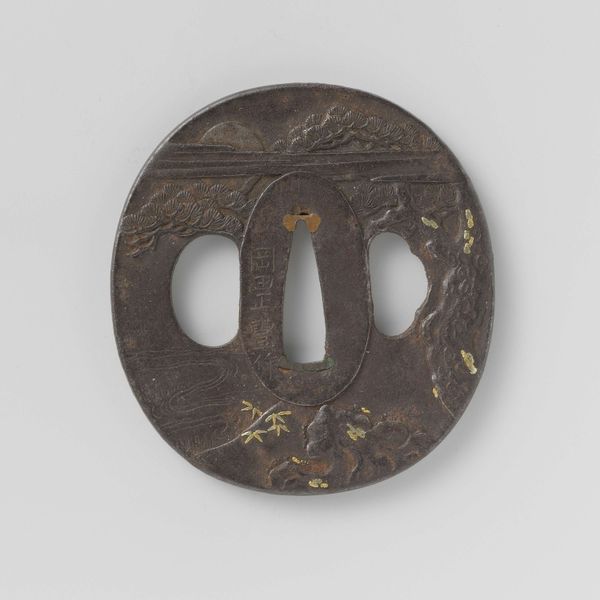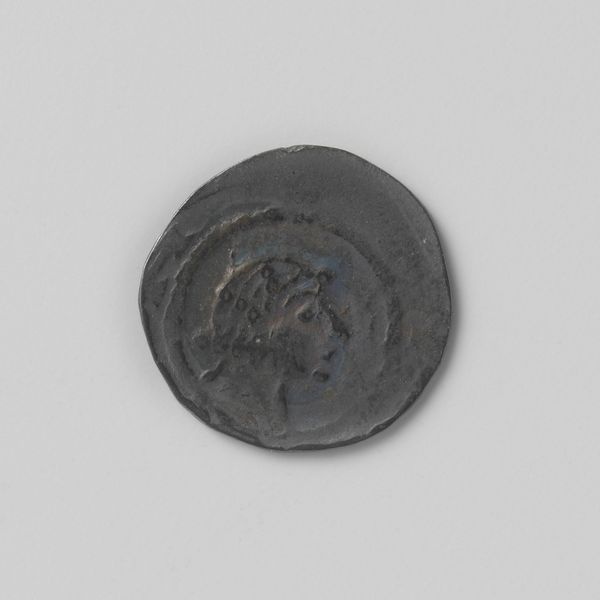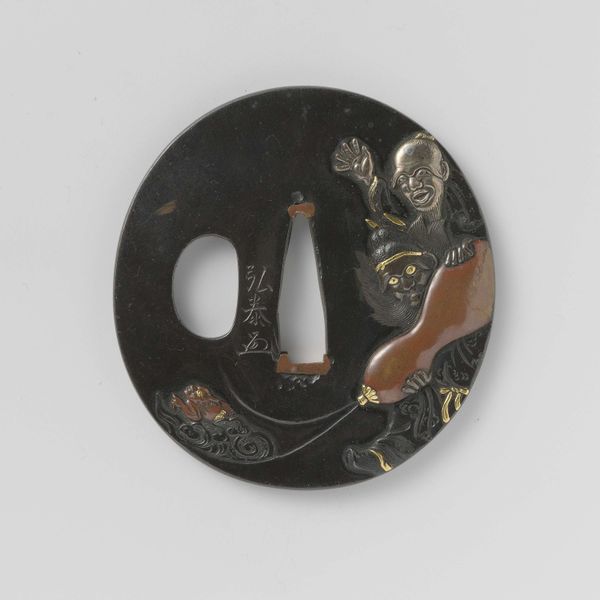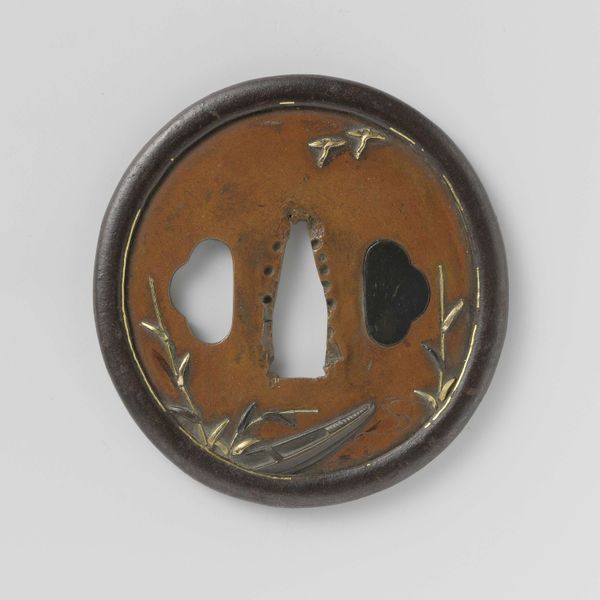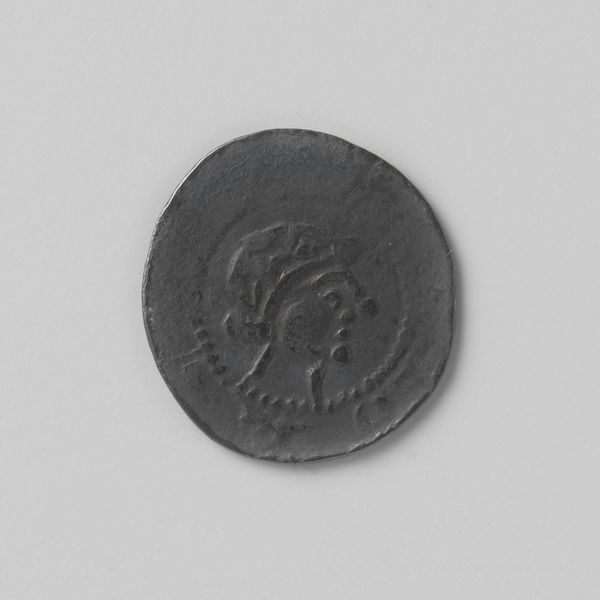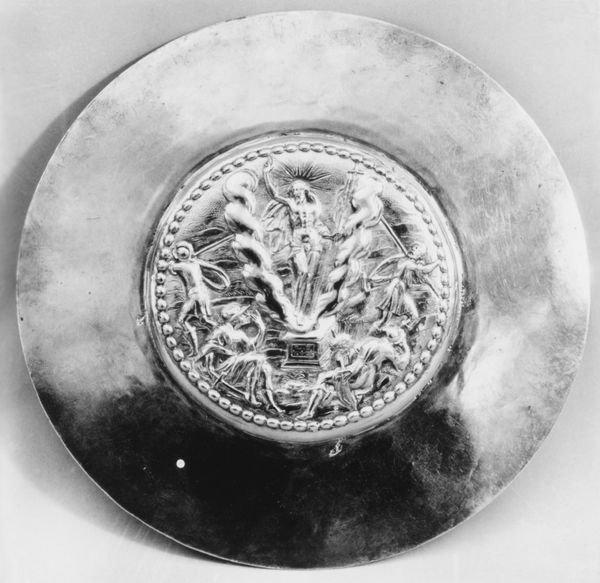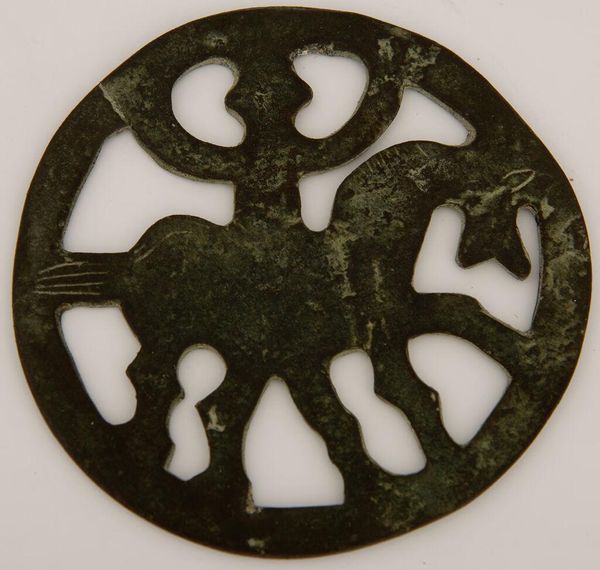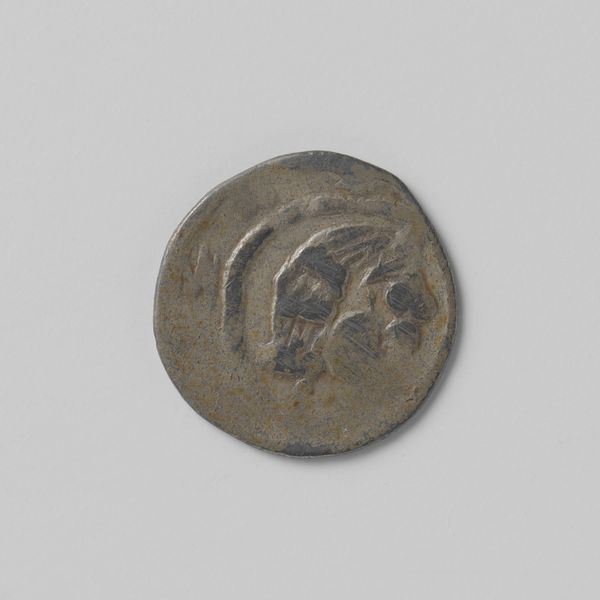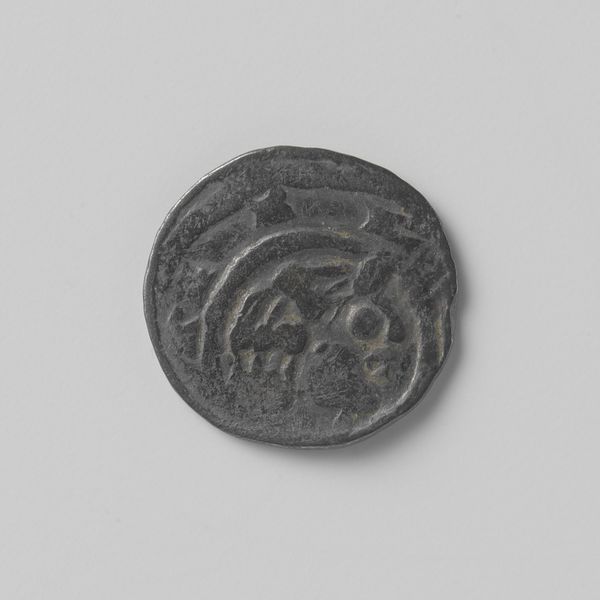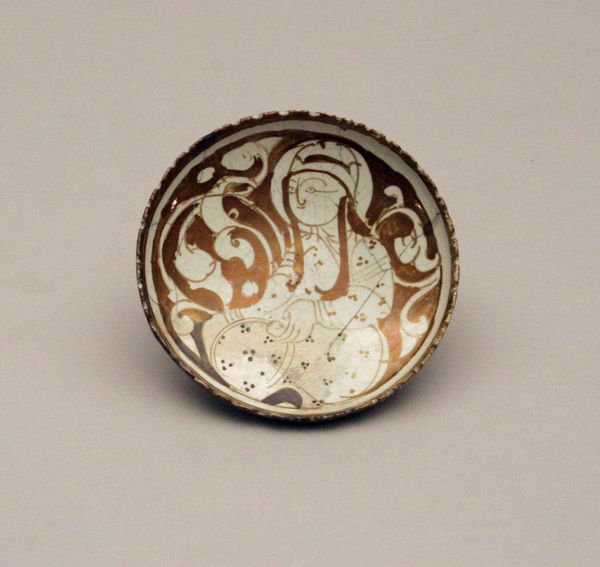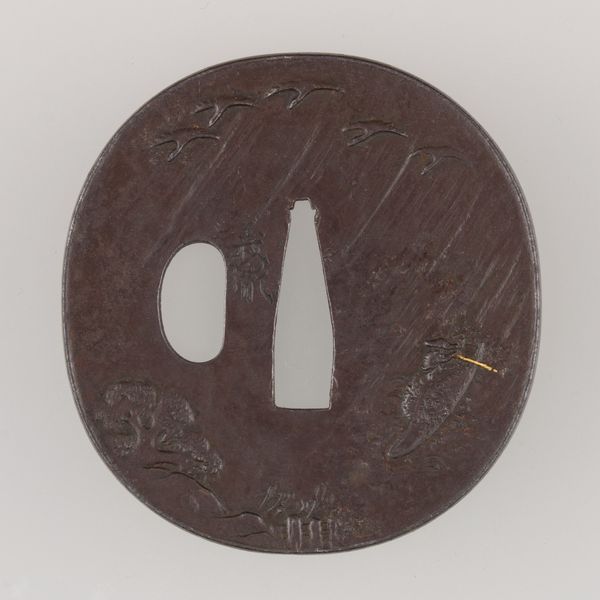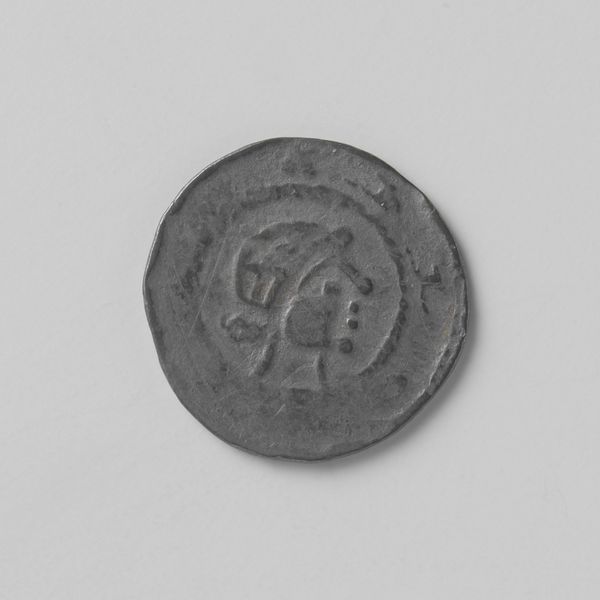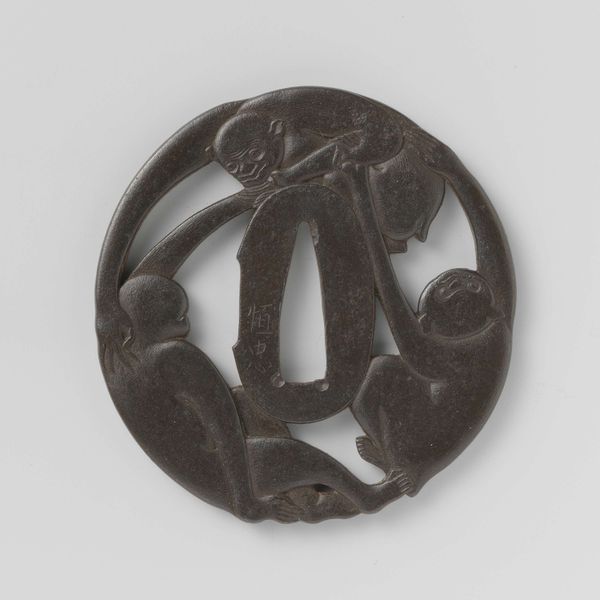
#
3d sculpting
#
3d printed part
#
sculpture
#
ring
#
sculptural image
#
black and white theme
#
unrealistic statue
#
3d shape
#
framed image
#
black colour
#
united-states
Dimensions: Diam. 6 1/8 in. (15.6 cm)
Copyright: Public Domain
Curator: The rhythmic interplay of monochrome strokes makes it quite captivating. What do you think of its material presence? Editor: It has an immediate rustic charm. Considering this utilitarian object, "Saucer," from around 1820-1880, I find myself pondering the historical processes and the lives intertwined with its production. Who was Daniel Dry and where was this produced? Curator: Precisely, let us examine the composition further. Notice the centrality of the vertical white stroke bifurcated by dark lines. This vertical form offers balance against the looping abstract forms that flank it, lending the saucer visual coherence. Editor: It's precisely those abstract forms that pique my interest, Daniel Dry active circa 1820-80 likely saw these everyday wares as functional objects rather than high art, but in the making, I’d venture a guess that Dry made a kind of art. The repetitive act of creation, the potential localized production perhaps near New York, invites speculations about labor and skill. Curator: It’s certainly a departure from academic artistic canons. Its formal rawness, devoid of perspectival illusion, directs attention to its intrinsic two-dimensionality, the stark black and white amplifying its geometric clarity. What visual connections or analogies emerge for you? Editor: The surface bears the mark of handcraft, which means that it was a handmade utilitarian good. Every imperfection probably came from human movement and environmental constraints, like firing temperature and material availability. In a way, these “imperfections” challenge notions of the auric when one really contemplates them. Curator: The piece certainly possesses a powerful design simplicity, prompting reflections on how lines define and divide space. Its stark monochromatic palette amplifies the dynamism between forms, pushing viewers towards a focused visual reading, isolating details to understand the whole. Editor: Exactly, and within that visual reading, lies an invitation to consider its existence beyond the aesthetic, where social conditions, economic systems, and human labor intersect to materialize functional, aesthetically captivating forms. These types of works stand against traditional “high art”, especially through their production. Curator: Agreed, "Saucer" showcases formal economy, inviting close looking, theoretical exploration, and prompting broader artistic boundaries within American material history. Editor: Indeed. Its modest existence allows us to engage with the conditions of labor, class, and skill inherent in craft traditions that echo through American history, making the mundane quite extraordinary.
Comments
No comments
Be the first to comment and join the conversation on the ultimate creative platform.
